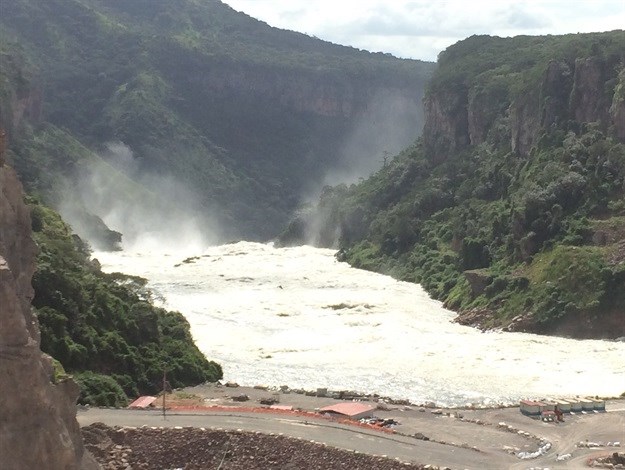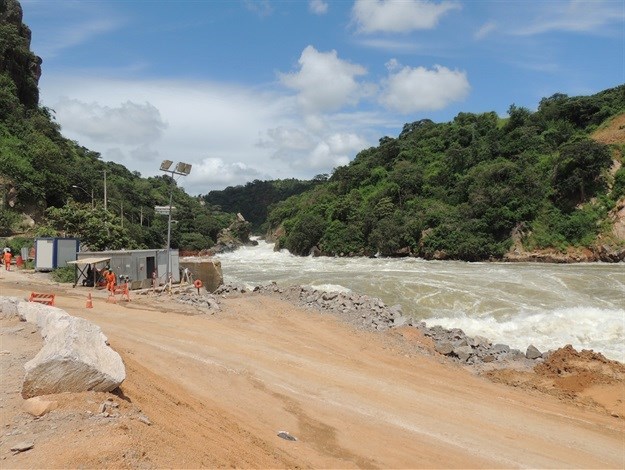“While hydropower is a popular renewable resource globally, it is not without its environmental and social impacts,” according to Chris Dalgliesh, partner and principal environmental consultant at SRK Consulting in South Africa. “Not least among these are the consequences of water inundating large areas to create the dams to feed the hydro-electric turbines.”

SRK has been contracted by financial institutions to conduct the environmental and social due diligence for three of the dams, to ensure compliance with Good International Industry Practice (GIIP).
The plans for Angola’s hydro projects are ambitious and far-reaching for the country’s development, requiring substantial investment of some $10bn for the first tranche of projects.
“Finance for these projects has to be raised and the lenders are Equator Principles Financial Institutions (EPFIs),” said Sharon Jones, associate partner and principal environmental scientist at SRK. “To protect themselves against environmental and social risks, the lenders are committed to ensuring that the Environmental and Social Impact Assessments (ESIAs) and project implementation are compliant with GIIP – typically a proxy for the International Finance Corporation (IFC) Performance Standards and the Equator Principles.”
The Kwanza River drops some 1,000m over about 200km of its middle course as it nears the coastline and discharges into the sea south of the capital Luanda. It has been estimated that this head of water could be harnessed to generate 7,000 to 8,000MW of energy from up to seven hydropower schemes along this reach of the river.
“The three proposed dams on which SRK is conducting Environmental and Social Due Diligence (ESDD) reviews are in an advanced stage of planning or execution, and could generate 5,000MW of electricity by 2021,” said Jones.
In addition to assessing the projects’ ESIAs, SRK is also conducting annual compliance reviews through construction and into operation to ensure that both these phases are compliant with best practice.
“In the case of the three projects that we are working on, the area to be flooded is about 230km2,” she said. “This will impact on terrestrial biodiversity and on a magnificent river environment that includes numerous sets of rapids over the affected areas. The cumulative impact of the projects may also be substantial, as the seven schemes are being considered in relatively close proximity to each other.”
Jones noted that the social impact of this kind of project often involved resettlement of people from their land or their villages.

“Fortunately the area is not highly populated so very little resettlement will be required,” she said. “Nonetheless, the process needs to be transparent, systematic and equitable so that those who are moved or displaced from their land are not disadvantaged. Resettlement Action Plans (RAP) have been developed which SRK has reviewed, with the focus now shifting to monitoring implementation of the RAPs.”
The dams will alter flow regimes in the river, which in turn affect the levels of sedimentation; the sediment is usually deposited onto surrounding land in the floodplain during the annual flooding of the river, and this will now be less likely to occur. Other concerns are that dams are physical barriers that tend to restrict the migration of fish species, and flooding of rapids will destroy those particular habitats which might be particular to certain species.
“To help balance Angola’s electricity demands with environmental protection, there are innovations that can be considered,” said Dalgliesh. “For instance, most habitats and species are unable to tolerate the daily changes in water levels and flow from a hydropower facility operating in ‘peak mode’ – releasing extra water at certain times each day to satisfy peak demand.
“A dam operated as a base-load facility, on the other hand, would release a more constant volume of water with fewer fluctuations, reducing impacts. Where a number of dams are in operation on the same river, as is the case on the Kwanza, there is the opportunity to operate at least some of them in base-load mode, and to limit the peak flow operation to as few dams as possible.”
Jones said the relatively short history of baseline environmental assessment in Angola meant that many areas were not well documented in terms of natural species and their prevalence.

“When studies are carried out for ESIAs, therefore, it is not uncommon that species new to science may be encountered,” she said. “It can be difficult to establish whether or not the species are common or rare, as little may be known about their occurrence in other parts of the country.”
Terms of employment for workers are also vital elements to consider, said Dalgliesh.
“These projects employ substantial numbers of employees, and standards must be applied regarding a range of issues including: health and safety; the rights of workers to organise; the accommodation they are entitled to; and the terms of their mobilisation and demobilisation,” he said. “These processes must, for example, be compliant with Angolan labour law and, in some cases, the standards of the International Labour Organisation.”